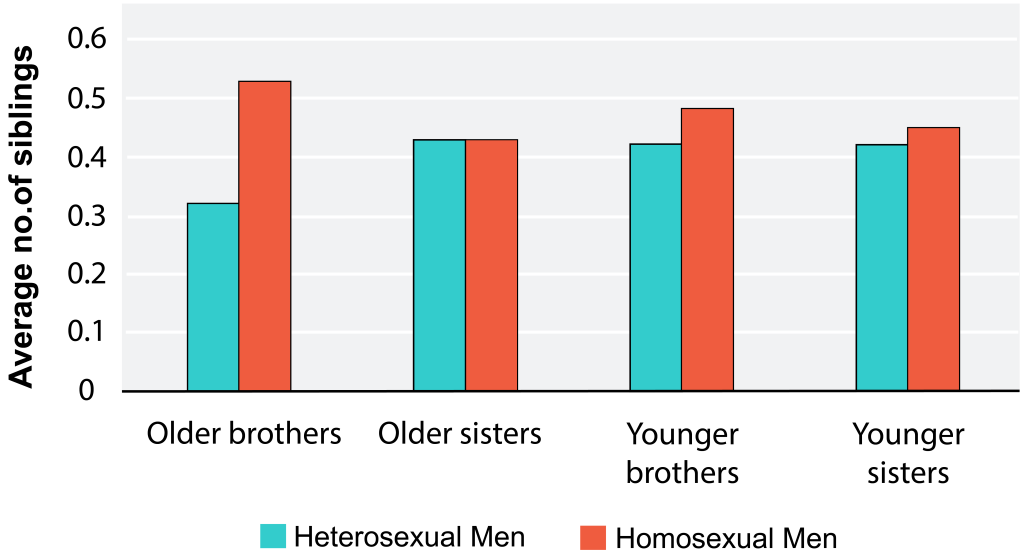12.7 Proximate environmental causes Part 2: Fraternal birth order and the uterine environment
What is the fraternal birth order effect?
In males, it appears to be that number of older brothers alters the likelihood of same-sex preferences later in life. Specifically, more older brothers (not sisters) is associated with homosexuality in men (not women). This is called the fraternal birth-order (FBO) effect in the scientific literature, and the evidence for the FBO effect is compelling. Simply, homosexual men, on average, have more older brothers than do heterosexual men, a difference that is not seen in homosexual versus heterosexual women.
A logical response to this finding would be to wonder whether growing up with older brothers somehow led more men to develop same-sex sexual preferences in adolescence, or if there was something about the uterine environment experienced pre-birth that made homosexuality in successive male offspring more likely.
Reflection Question: How would you address these differences scientifically?
Consider the data represented in the following two figures. [1]
What do these graphs show? Do these findings lend support to the fraternal birth-order effect?


 Read More
Read More
Check out this brief and accessible summary of research about the fraternal birth-order effect.
Caution: These differences in uterine influences on male and female homosexuality also illustrate a key point: male homosexuality and female homosexuality appear to have different causes, thus we should be careful not to transfer the findings of research on men to the reality of sexuality in women. Further, male and female homosexuality are likely influenced by multiple factors.
- from review of data in: Blanchard, R., Dickey, R. & Klassen, P. The relation of birth order to sexual orientation in men and women. (1998). doi:10.1017/S0021932098005112 ↵

